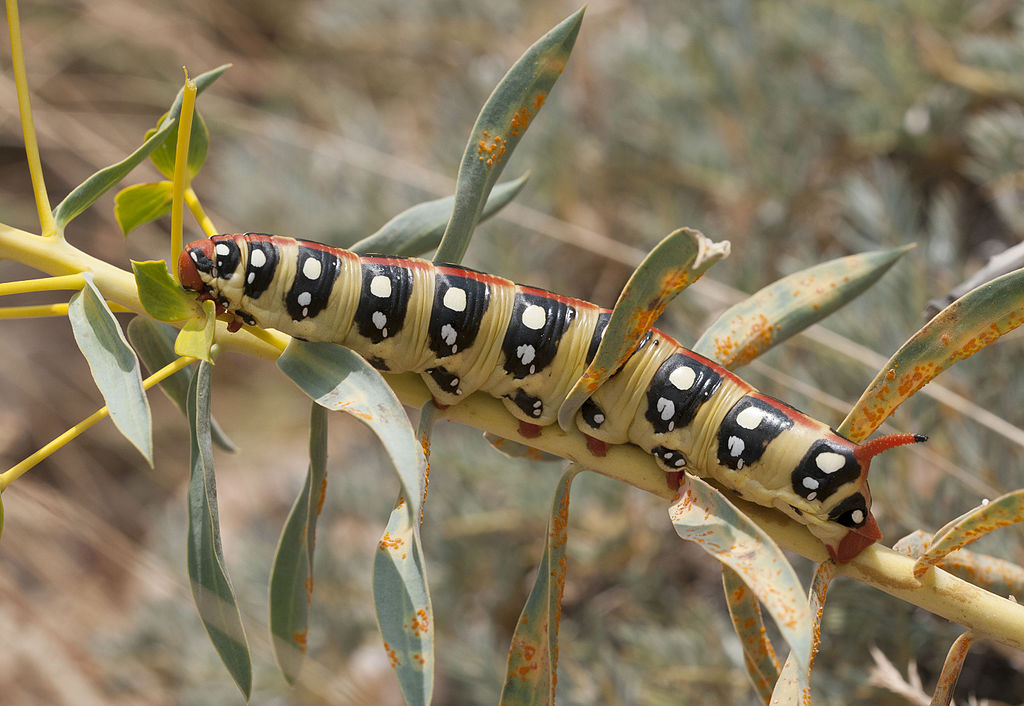In the intricate world of evolutionary adaptations, mimicry stands as one of nature’s most fascinating survival strategies. Among these clever disguises, certain insects have developed remarkable resemblances to snakes—creatures typically avoided by many potential predators. This evolutionary sleight of hand, known as Batesian mimicry, allows relatively harmless insects to benefit from the fearsome reputation of venomous snakes. From caterpillars with false eyespots to moths with serpentine patterns, these insects demonstrate nature’s ingenuity in the eternal game of survival. Let’s explore five remarkable insects that have evolved snake-like appearances, examining how these disguises function and the evolutionary pressures that shaped them.
The Evolutionary Advantage of Snake Mimicry
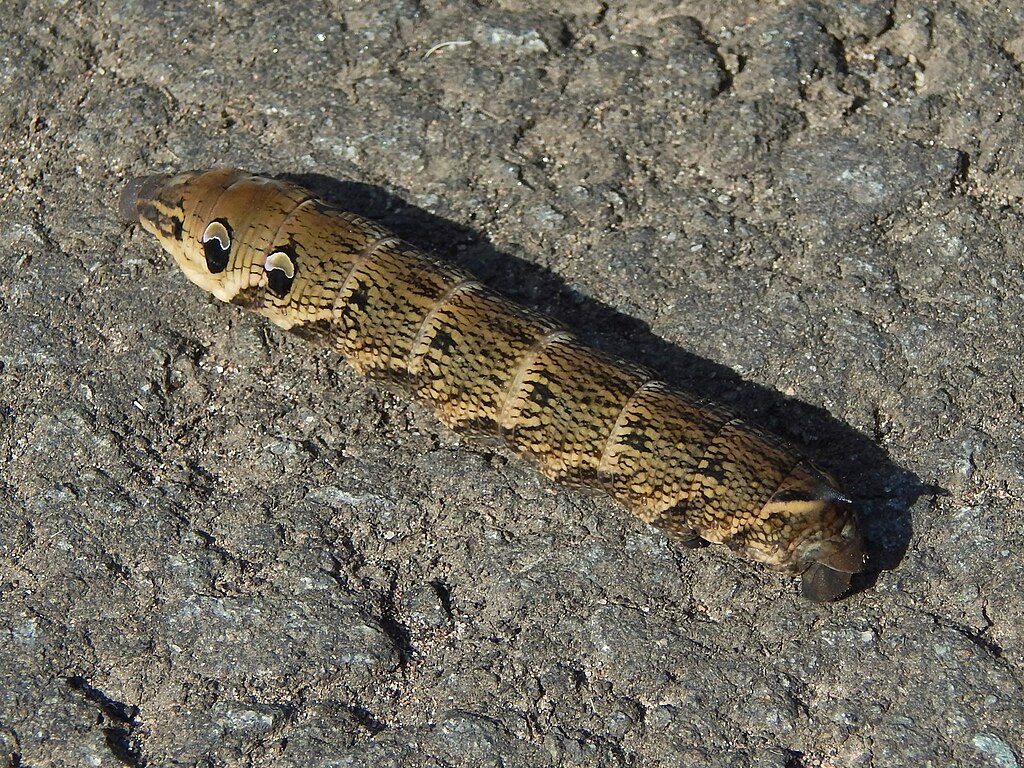
Snake mimicry represents a powerful survival strategy in the insect world, primarily functioning as a defensive mechanism against predators. By resembling snakes—animals that many predators instinctively avoid—these insects gain protection without actually possessing the venomous capabilities of their models. This form of deception, known as Batesian mimicry, works because predators have evolved innate or learned aversions to dangerous animals like snakes. The effectiveness of this mimicry depends on several factors, including the accuracy of the resemblance and the geographical overlap between the mimic and the model snake species. For insects, which are typically vulnerable to a wide range of predators, evolving snake-like features provides a significant survival advantage, potentially reducing predation rates by birds, mammals, and even other insects.
The Hawk Moth Caterpillar: Master of Serpent Disguise
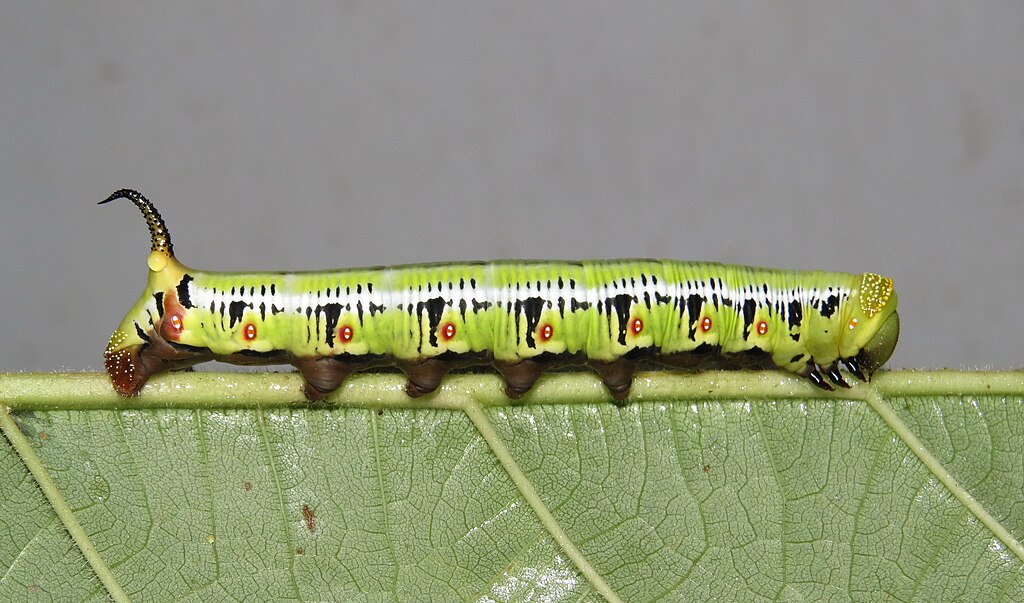
The hawk moth caterpillar (particularly those in the Hemeroplanes genus) stands as perhaps the most convincing snake mimic in the insect world. When threatened, these remarkable caterpillars inflate their thoracic segments, transforming their body shape to create an uncanny resemblance to a snake’s head, complete with realistic-looking eyes and scales. The illusion doesn’t stop with physical appearance—these caterpillars enhance their deception by mimicking snake movements, retracting their actual legs and swaying like a serpent preparing to strike. Found in the rainforests of Central and South America, these caterpillars specifically mimic the fer-de-lance and other venomous vipers native to the region. This sophisticated mimicry is so convincing that it can startle even human observers, demonstrating the evolutionary precision of this adaptation.
The Spectacular Snake Caterpillar of the Amazon

The Amazon rainforest hosts one of the most dramatic examples of snake mimicry in the Dynastor darius butterfly caterpillar, commonly known as the snake caterpillar. This large larva possesses an extraordinary adaptation: its posterior end features intricate patterns and shapes that create a striking resemblance to a snake’s head. When disturbed, the caterpillar flips its body, presenting the false snake head to potential threats while hiding its vulnerable actual head. The illusion includes realistic-looking scales, nostrils, and even the impression of a snake’s mouth that appears capable of striking. Scientists have observed that birds and small mammals consistently avoid these caterpillars, demonstrating the effectiveness of their deceptive appearance. The mimicry is particularly specialized to resemble venomous snake species endemic to the Amazon basin, showing the localized nature of this evolutionary adaptation.
The Atlas Moth: Wings That Warn Like a Serpent
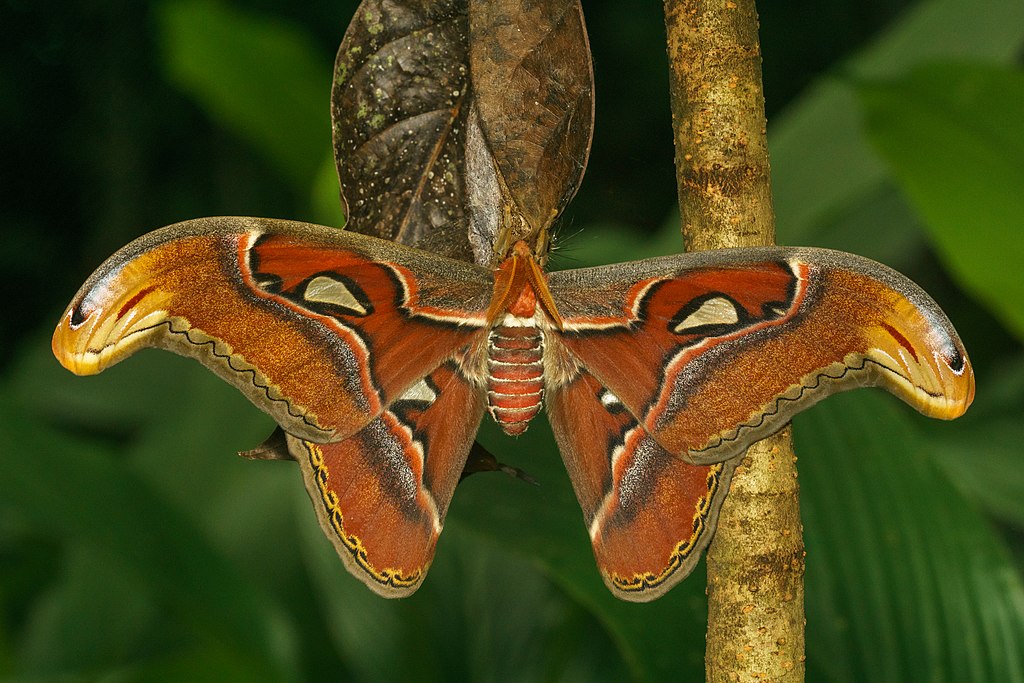
The Atlas moth (Attacus atlas), one of the largest moths in the world with a wingspan reaching up to 12 inches, displays remarkable snake mimicry in its wing tips. The extended tips of its forewings bear an unmistakable resemblance to the head of a cobra, complete with eye-like patterns and scale-like textures that become especially apparent when the moth is at rest. This mimicry serves as a powerful deterrent against birds and other predators that might otherwise target the moth during its vulnerable daylight resting periods. Unlike some mimics that only display their deception when threatened, the Atlas moth’s snake-like appearance is a permanent feature of its anatomy, providing constant protection. Native to the forests of Southeast Asia, the moth’s mimicry specifically recalls the appearance of cobras found in the same geographical range, highlighting the co-evolutionary relationship between mimic and model.
The Sphinx Moth Caterpillar’s Defensive Posture
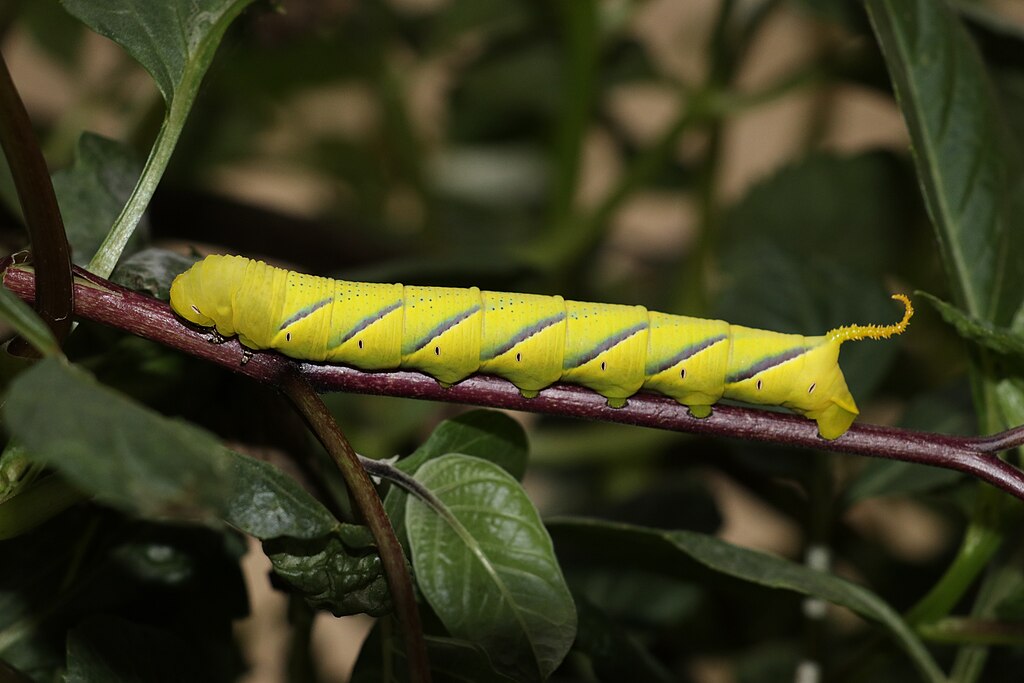
Various species of sphinx moth caterpillars (family Sphingidae) have evolved a distinctive defensive posture that creates a convincing snake-like appearance. When disturbed, these caterpillars rear up, drawing their head into their thorax while inflating segments of their body to create the illusion of a serpent’s head. Many species enhance this deception with prominent eyespots positioned strategically on their bodies, mimicking the watchful gaze of a snake. The tomato hornworm (Manduca quinquemaculata), a common sphinx moth caterpillar, demonstrates this behavior particularly well, combining its posture with a snake-like hissing sound produced by forcing air through specialized openings. Research has shown that birds are significantly less likely to attack these caterpillars when they adopt this snake-like pose, confirming the adaptive value of this behavioral mimicry.
The Puss Moth Caterpillar’s Terrifying Transformation
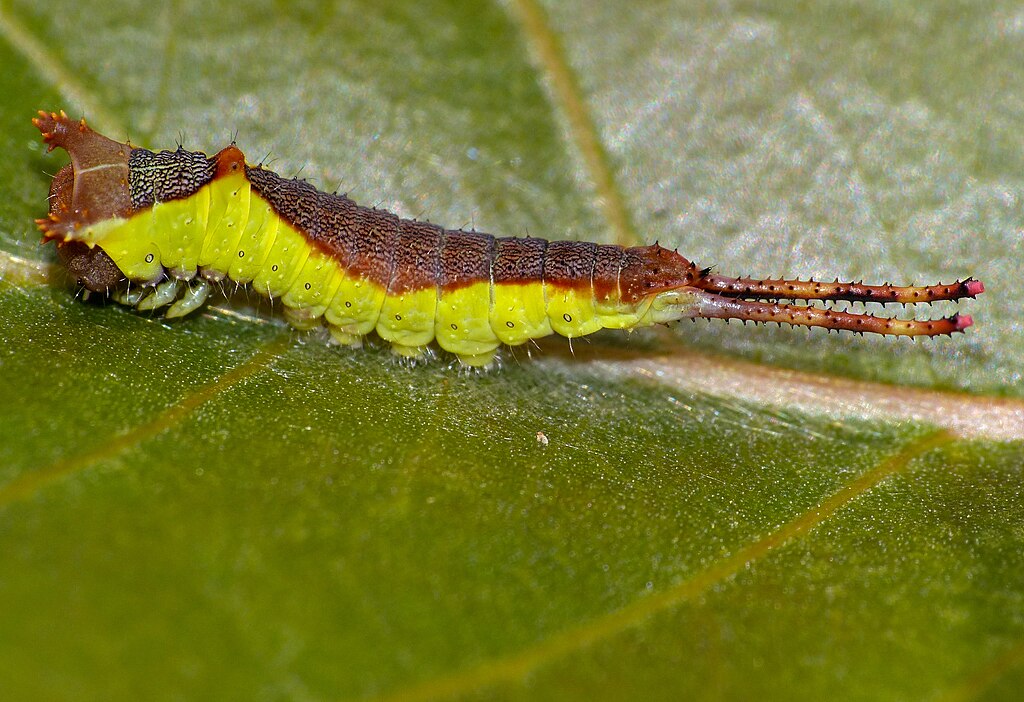
The caterpillar of the puss moth (Cerura vinula) displays one of the most dramatic defensive transformations in the insect world. When threatened, this otherwise inconspicuous green caterpillar undergoes a startling metamorphosis, inflating its head region and revealing large black eyespots that create a convincing snake-like face. The caterpillar enhances this visual deception by extending two whip-like tails from its posterior end and assuming a striking posture reminiscent of a serpent ready to attack. Adding to this alarming display, the caterpillar can evert bright red tentacles from behind its false face and emit formic acid as a chemical defense. This multi-layered defensive strategy combines visual mimicry with actual defensive capabilities, making it a particularly effective deterrent against avian predators that might otherwise prey on these caterpillars.
The Science Behind Visual Deception
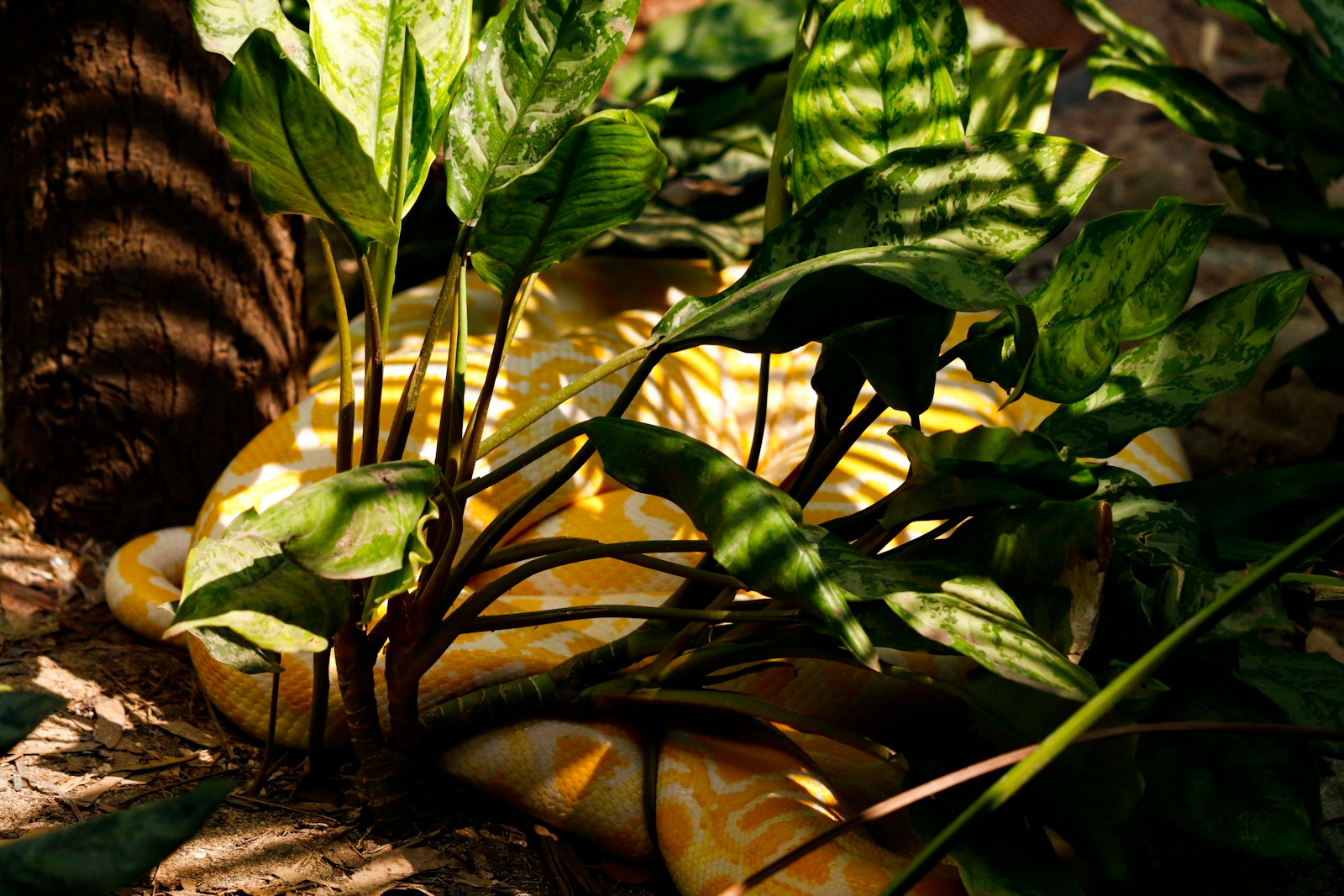
The snake-like appearances of these insects represent remarkable examples of convergent evolution, where unrelated organisms develop similar traits in response to similar selective pressures. The effectiveness of snake mimicry relies on triggering innate fear responses in potential predators, particularly birds, which have evolved heightened sensitivity to snake-like visual patterns. Neuroscientific research has demonstrated that many vertebrate brains contain specialized neural circuits that rapidly process snake-like shapes and patterns, triggering immediate avoidance responses. These insects exploit this neurological vulnerability by incorporating key visual elements—eyespots, triangular head shapes, scale-like patterns, and sinuous movements—that activate these fear responses. The precision of these adaptations often extends beyond mere visual resemblance to include behavioral components such as specific movements or postures that enhance the deception, creating multi-sensory illusions that maximize their protective effect.
The Geographical Distribution of Snake-Mimicking Insects
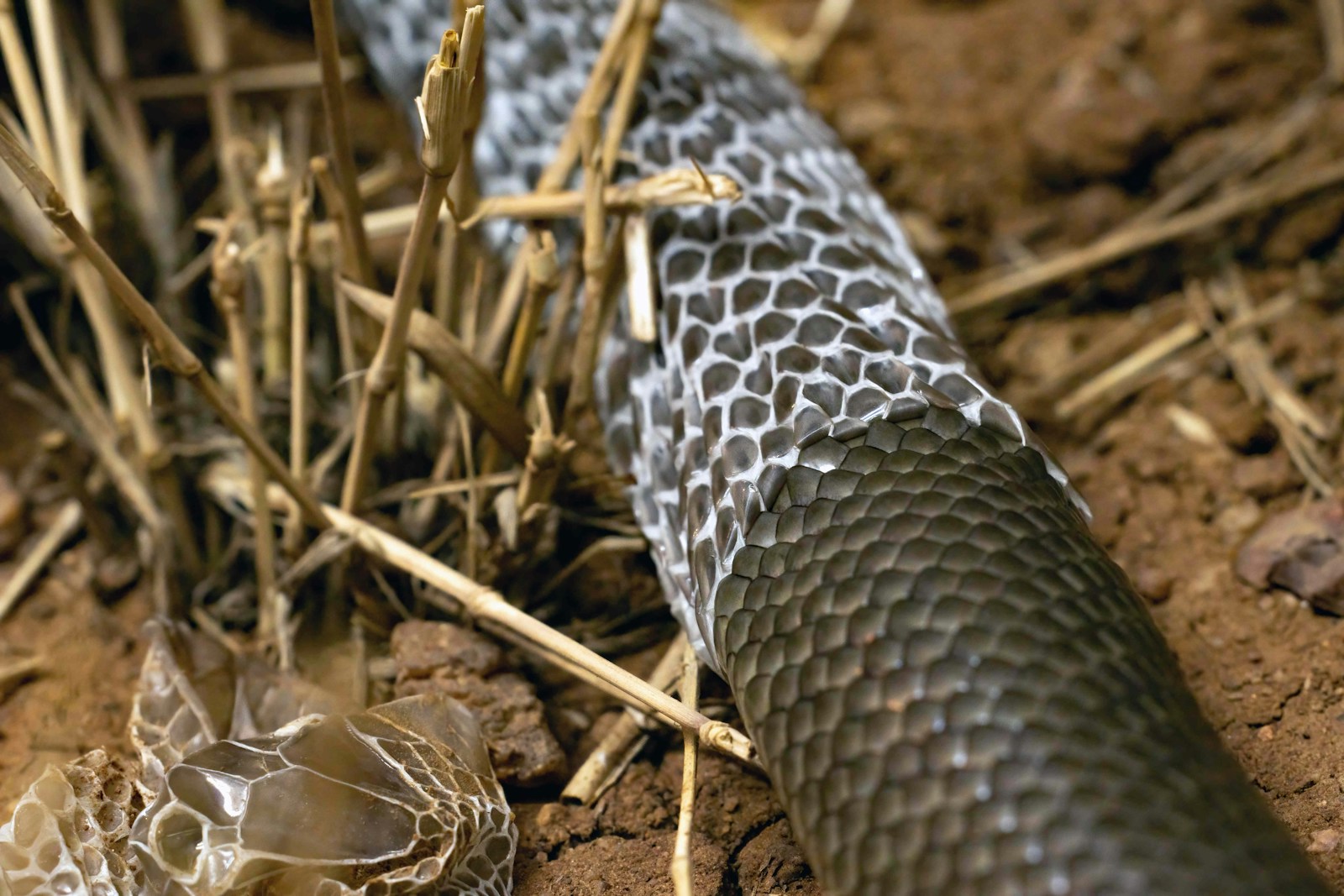
Snake-mimicking insects show fascinating geographical patterns that often correlate with the distribution of venomous snakes. The highest diversity and most convincing mimics tend to occur in tropical regions where venomous snake species are abundant, particularly in the rainforests of South America, Southeast Asia, and parts of Africa. This geographical correlation supports the evolutionary theory behind Batesian mimicry—the effectiveness of mimicking a dangerous model depends on predators having experience with the actual dangerous species. In regions where venomous snakes are less common or absent, such as higher latitudes or isolated islands, snake mimicry in insects is correspondingly less developed or absent. This pattern offers compelling evidence for the selective pressures driving the evolution of these remarkable adaptations and demonstrates how local ecological conditions shape the development of mimicry systems.
Evolutionary Development of Snake-Like Features
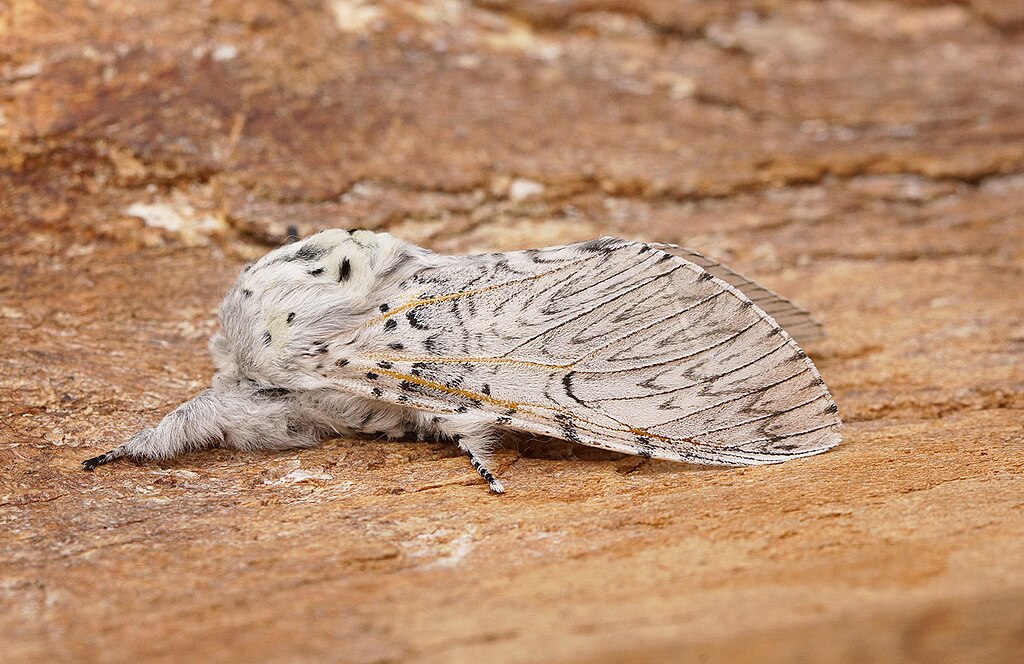
The evolution of snake-like features in insects follows a fascinating developmental pathway governed by genetic mutations and selective pressures. These adaptations typically begin with small, random variations that confer slight survival advantages—perhaps a subtle pattern or behavior that vaguely suggests a snake. Over countless generations, individuals with more convincing snake-like traits survive at higher rates, passing these beneficial genes to offspring and gradually refining the mimicry. Genetic studies of the hawk moth caterpillar have identified specific regulatory genes controlling the development of their false eyespots, showing similarities to the genetic mechanisms that control pattern formation in other animals. The process represents an excellent example of how natural selection can produce seemingly purposeful adaptations through purely mechanical evolutionary processes. Developmental biologists are particularly interested in these mimicry systems as they demonstrate how dramatic anatomical and behavioral specializations can emerge through modifications to existing developmental pathways.
Predator Responses to Snake Mimics
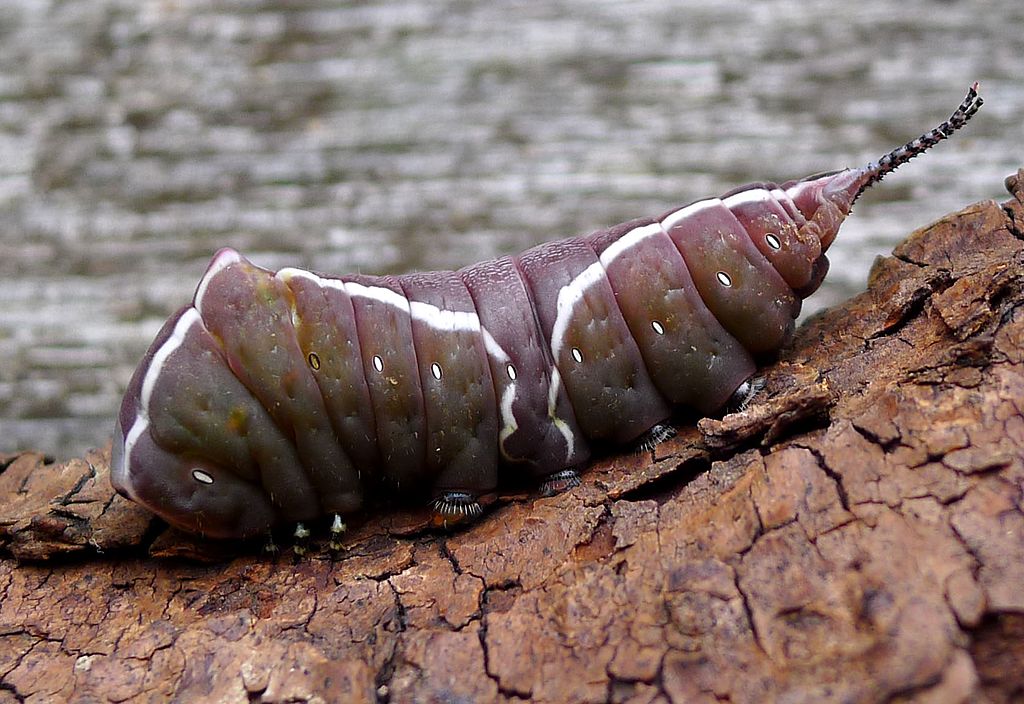
The effectiveness of snake mimicry ultimately depends on how predators respond to these deceptive displays. Research has documented that many predators, particularly birds, exhibit strong innate aversions to snake-like visual patterns, suggesting an evolutionary history of dangerous encounters with snakes. Controlled experiments have shown that naïve birds raised in captivity without exposure to snakes still demonstrate aversion to caterpillars displaying snake mimicry, confirming the innate rather than learned nature of these responses. However, the effectiveness of mimicry varies across different predator species; mammals, for instance, rely more on olfactory cues and may be less deceived by purely visual mimicry. The most successful snake mimics typically incorporate multiple sensory elements, combining visual resemblance with movements, sounds, or postures that collectively create a more convincing illusion. This multi-sensory approach helps ensure that the mimicry works against a broader range of potential predators with different sensory specializations.
Limitations and Vulnerabilities of Snake Mimicry
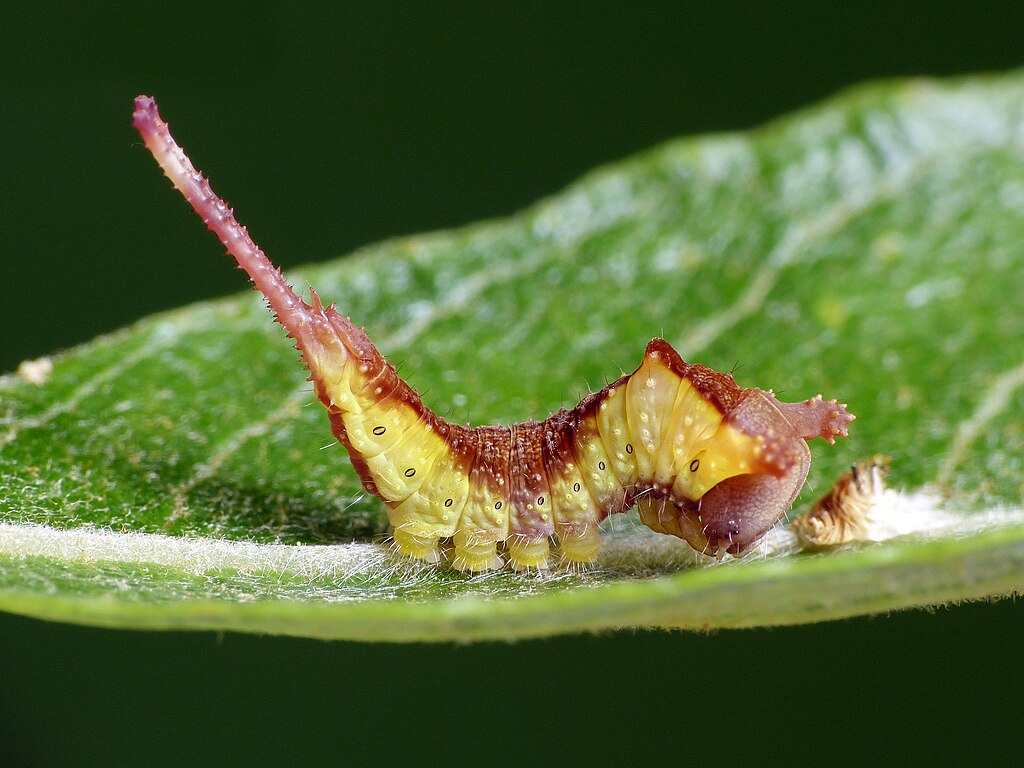
Despite its effectiveness, snake mimicry as a defensive strategy has several limitations and vulnerabilities. For instance, the mimicry typically functions only from certain angles or when the insect adopts specific postures, leaving periods when the deception is less effective. Specialized predators that regularly feed on snakes, such as certain birds of prey or mongooses, might not be deterred by the mimicry and could potentially target these insects regardless of their appearance. Additionally, the effectiveness of Batesian mimicry depends on the relative abundance of mimic and model—if snake-mimicking insects become too common relative to actual venomous snakes, predators may learn to ignore the warning signals. Some predators can also learn to distinguish genuine threats from harmless mimics through experience, particularly if the mimicry is imperfect. These limitations illustrate why snake mimicry often appears as part of a broader defensive strategy that may include chemical defenses, camouflage, or other protective adaptations.
Conservation Implications for Snake-Mimicking Species
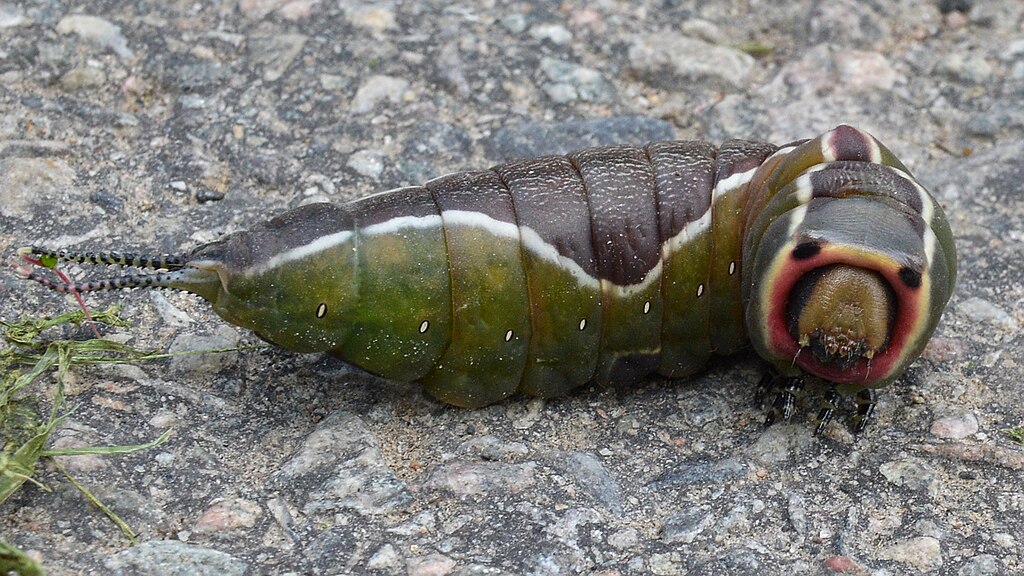
Snake-mimicking insects face unique conservation challenges in today’s changing world. As habitat destruction fragments ecosystems, these specialist species often suffer disproportionately due to their complex ecological relationships. The effectiveness of their mimicry depends on predators maintaining learned or evolved responses to venomous snakes—if snake populations decline, the protective value of mimicking them may diminish over time. Climate change poses additional threats, potentially creating mismatches between the geographical ranges of mimics and their model snake species. Furthermore, many snake-mimicking insects have specialized habitat or dietary requirements that make them vulnerable to environmental changes. Conservation efforts must consider these complex dependencies and work to preserve not just individual species but the entire ecological networks that maintain these evolutionary relationships. The intricate adaptations of snake-mimicking insects serve as powerful reminders of the often hidden ecological connections that sustain biodiversity.
Conclusion: Nature’s Evolutionary Masterpieces
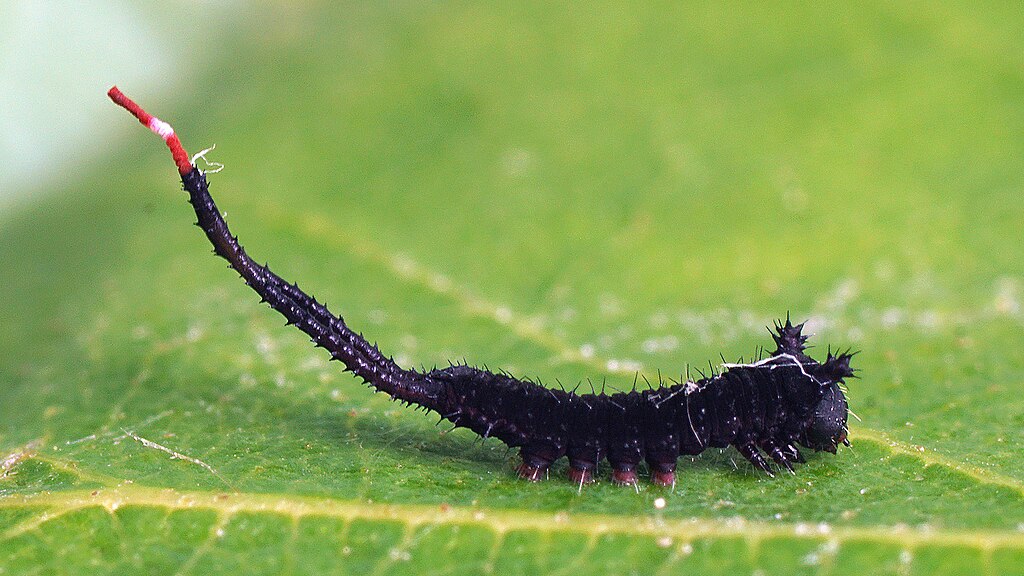
The remarkable snake mimicry displayed by these five insects represents some of nature’s most sophisticated evolutionary adaptations. Through millions of years of natural selection, these species have developed appearances and behaviors that exploit the innate fears of their predators, creating illusions so convincing they can startle even human observers. From the hawk moth caterpillar’s inflatable snake head to the Atlas moth’s cobra-like wing tips, these adaptations demonstrate the power of evolutionary processes to craft exquisite solutions to survival challenges. Beyond their practical function, these mimicry systems provide biologists with natural laboratories for studying evolution, sensory perception, and predator-prey relationships. As we continue to explore and protect the world’s biodiversity, these snake-mimicking insects stand as testimony to the endless creativity of natural selection and the complex interconnections that shape all life on Earth.

